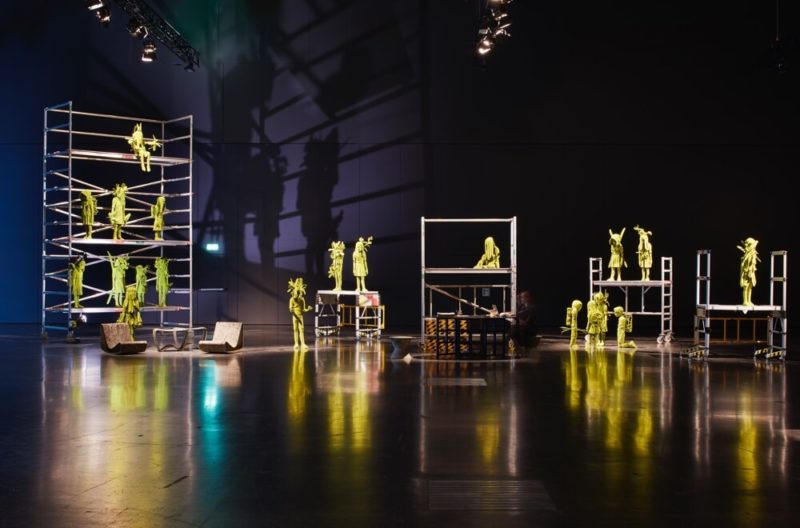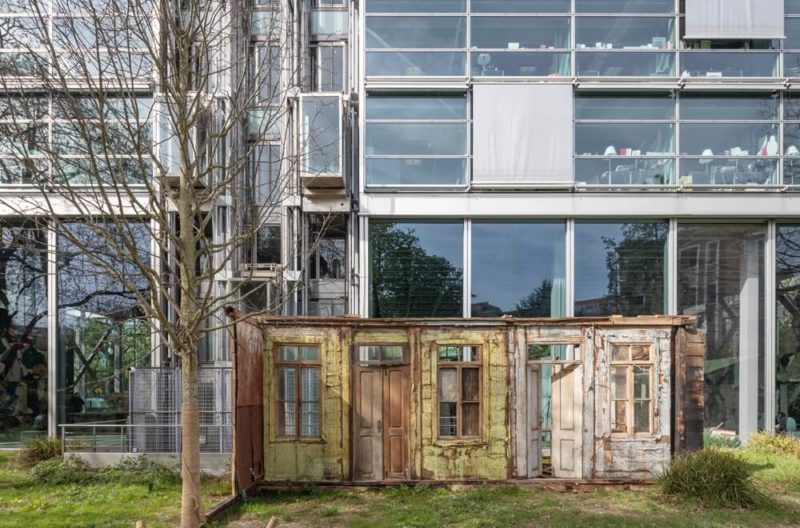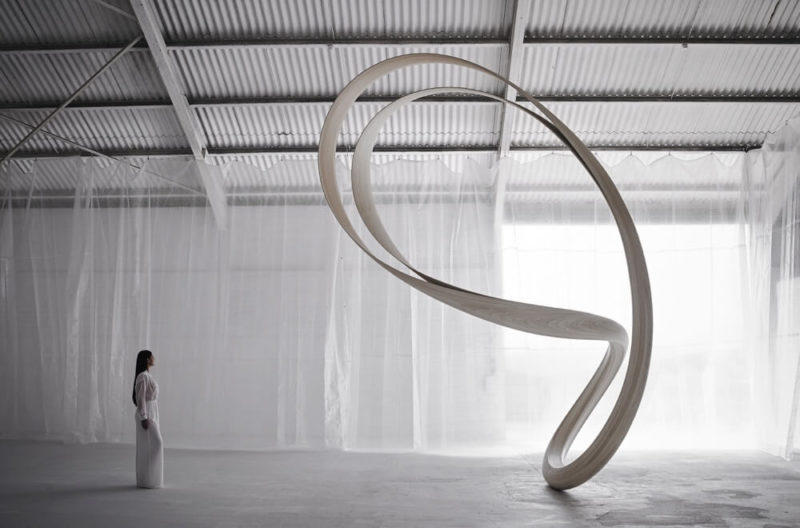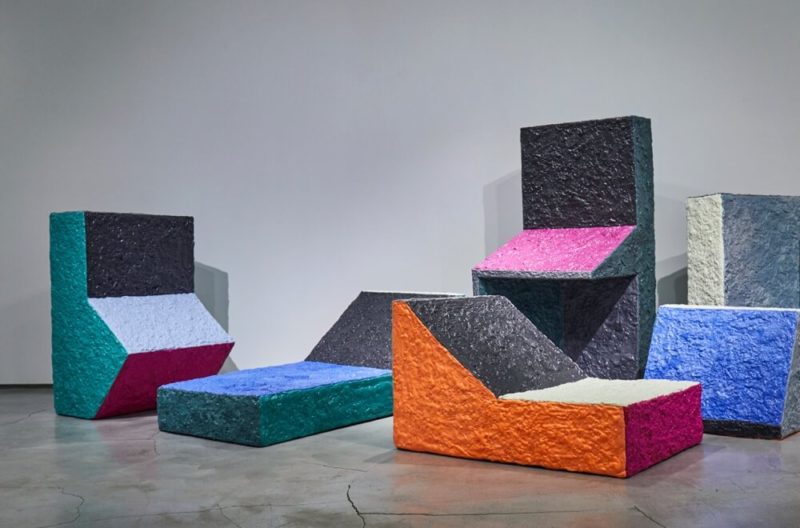Aric Chen
The first curatorial director of Design Miami/ talks to The Design Edit about the role of collectible design.
ARIC CHEN, BORN in the US to Taiwanese parents, is a curator and critic based in Shanghai. With an MA in design history from Parsons/Cooper-Hewitt Museum in New York, he worked as a journalist before moving into curating. His position as creative director of Beijing Design Week led to him being appointed curator of design and architecture at M+, the museum for visual culture being constructed in Hong Kong. After six years steering acquisitions for the museum’s collection, he resigned last year and became M+’s curator-at-large.
This year he was appointed the first curatorial director of Design Miami/, a newly created annual position at the fair. At Design Miami/ Basel’s 14th edition, this June, Chen showcased how designers have been tackling planetary change in his thematic exhibition ‘Elements: Earth’. In the ground-floor space, he presented nine projects by designers whose galleries had stands in the fair upstairs. The Design Edit caught up with him there.
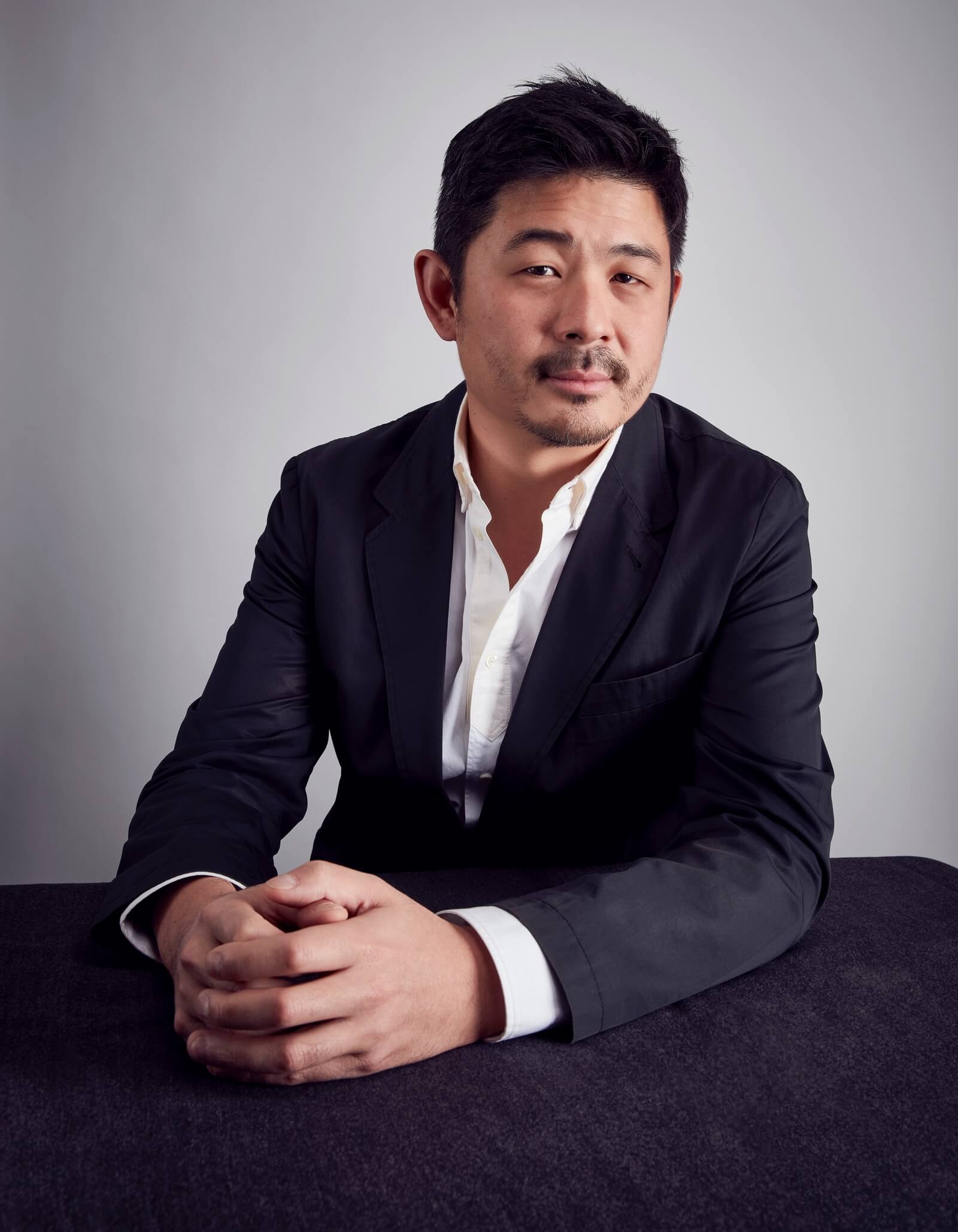
Aric Chen
PHOTOGRAPH: Mark Cocksedge
What acquisitions did you make for the M+?
We officially have 3,000 works in design and architecture, plus around 30,000 archival items which include Archigram, other design drawings and photographic documentation. There’s everything from post-independence posters from Indonesia and Singapore, to Japanese furniture and industrial design, including the first rice cooker in 1954 and an early precursor to the tuk tuk, as well as contemporary Chinese furniture and architecture. I’m really proud of Shiro Kuramata’s Kiyotomo sushi bar (1988) and I think we might have the strongest museum collection of his work. We also acquired his ‘Homage to Joseph Hoffmann chair’ (1985), of which he made only two; Issey Miyake has the other one. Kuramata took a re-edition of a Joseph Hoffman chair, wrapped it in steel wire and burnt it so it would become a ghost of itself, literally dematerialising the piece. One of my last acquisitions was an original Louis Kahn model for his unmade proposal for the Hurva Synagogue in Jerusalem in the late 1960s. We also have the last existing work by Vann Molyvann (the lesser-known state architect of Cambodia who designed spectacular buildings as part of the country’s modernisation programme before the Khmer Rouge took over), a rare piece that Charlotte Perriand made during her time in Japan, some great pieces from Chandigarh, and a cabinet designed by Balkrishna Doshi for Le Corbusier’s Mill Owners’ Association Building in Ahmedabad.
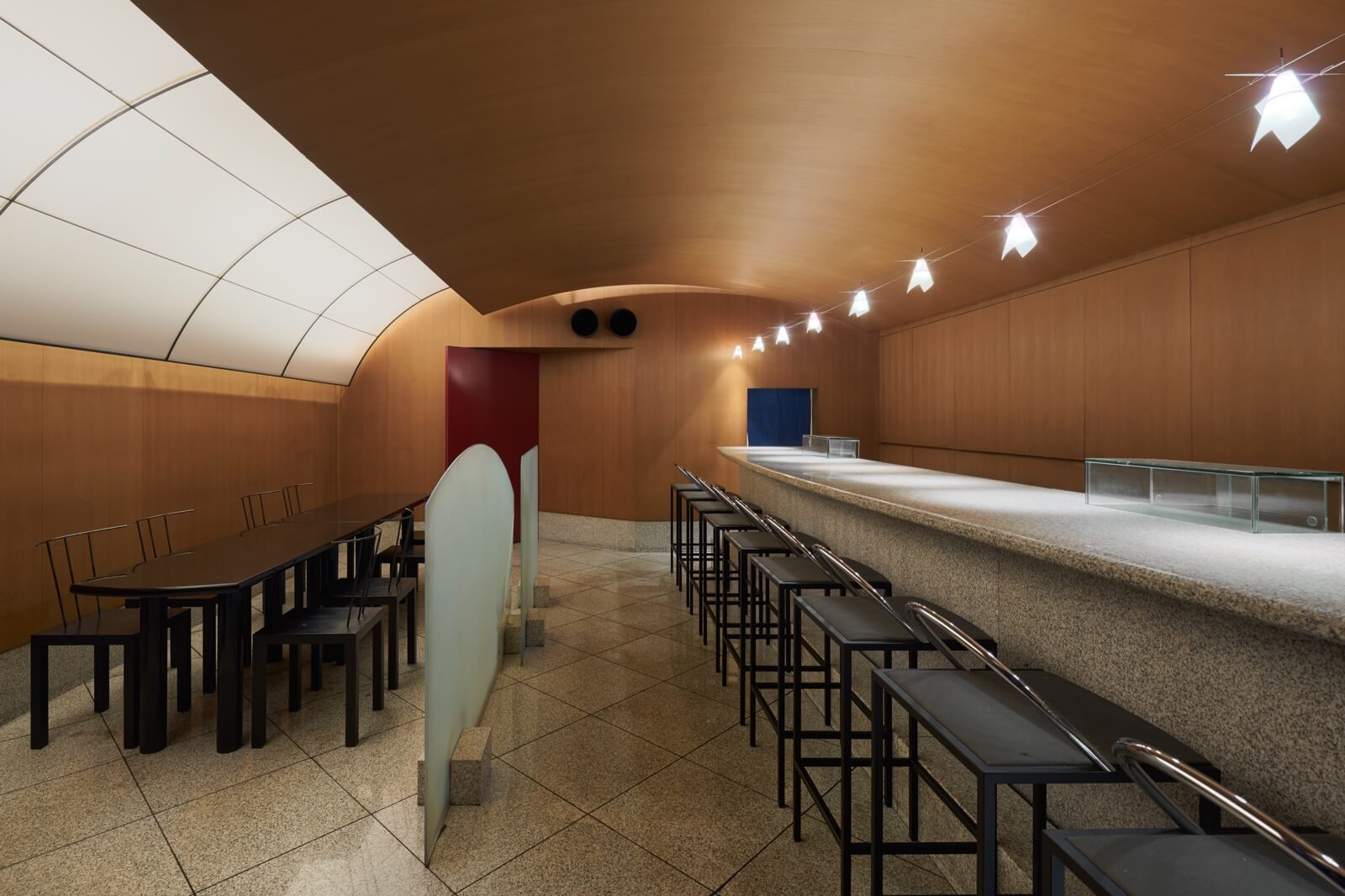
Shiro Kuramata, ‘Kiyotomo sushi bar’, 1988
COURTESY: © Kuramata Design Studio / PHOTOGRAPH: Daici Ano
How would you describe your role at DesignMiami/ Basel and why did you want to focus on a planetary theme?
My role is about setting the tone and establishing more focused discussions but not in a heavy-handed way. It’s not so much that I wanted to focus on materials, resources and making in this time of planetary change, but that designers are dealing with this issue. I thought it was interesting to discuss this in the context of a collectible design fair and give a platform to this kind of work.
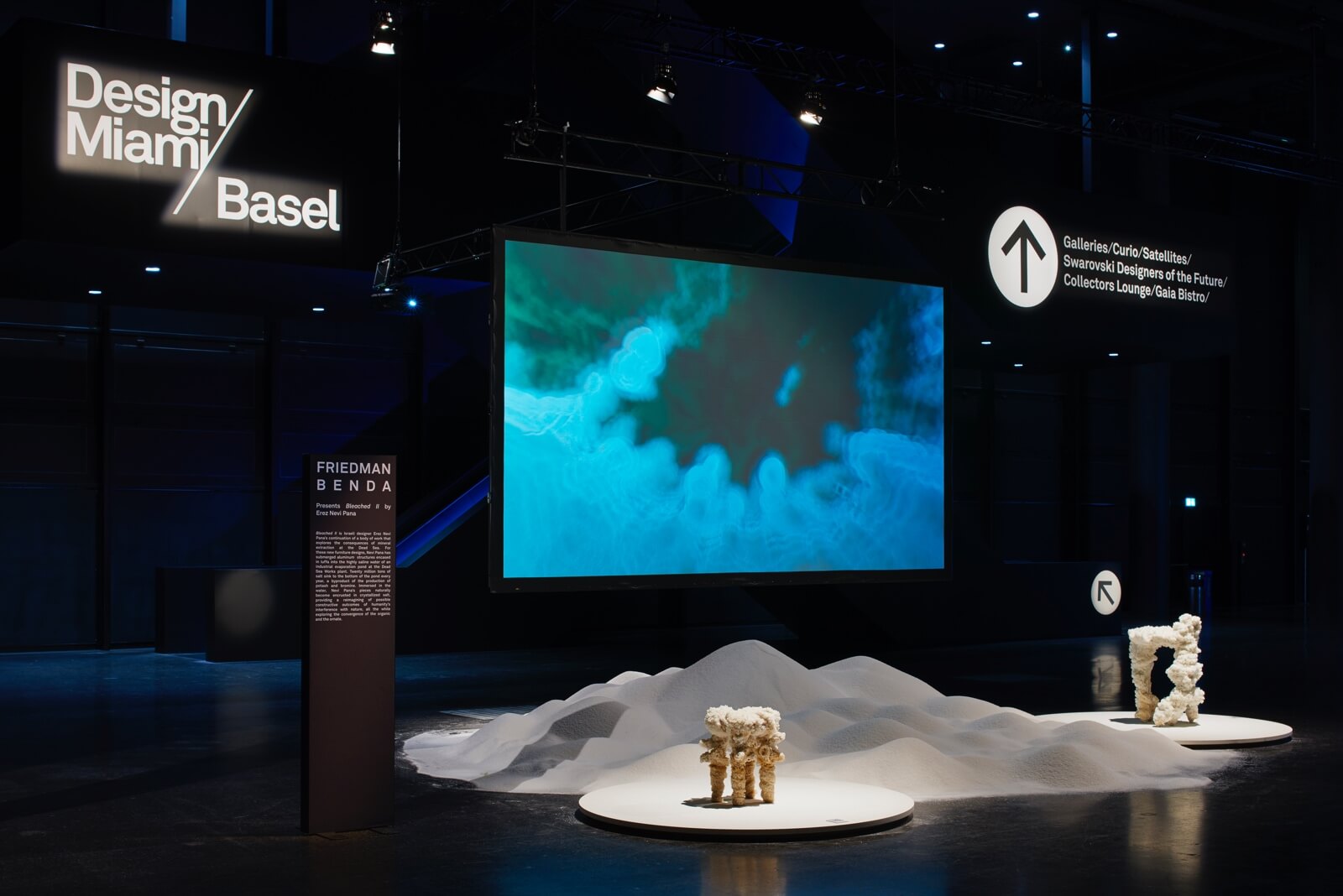
Erez Nevi Pani, ‘Bleached II’, at Friedman Benda
COURTESY: James Harris
What can you tell us about your selection?
I started out with Formafantasma’s ‘Ore Streams’ [an investigation into the recycling of electronic waste to make office-like furniture, 2017-2019], which I’d first seen when it previewed at the National Gallery of Victoria in Melbourne. I already knew Shahar Livne’s ‘Metamorphism’ series (2018), based on a conceptual, composite material made from plastic fragments, and Erez Nevi Pana’s ‘Bleached II’ (2018) salt pieces.
Andrea Branzi’s ‘Territories’ (1988-2018) added theoretical rigour to the discussion, while Joseph Walsh’s ‘Magnus V’ (2018), a huge mobius loop sculpture in bent ash wood, brought a wonderful element to the fair. And Kim Simonsson’s ‘Moss Tower’ (2019) has ceramic figurines inspired by Nordic fairytales of the dark forest, which are incredible when seen up close and have a terrifying beauty.
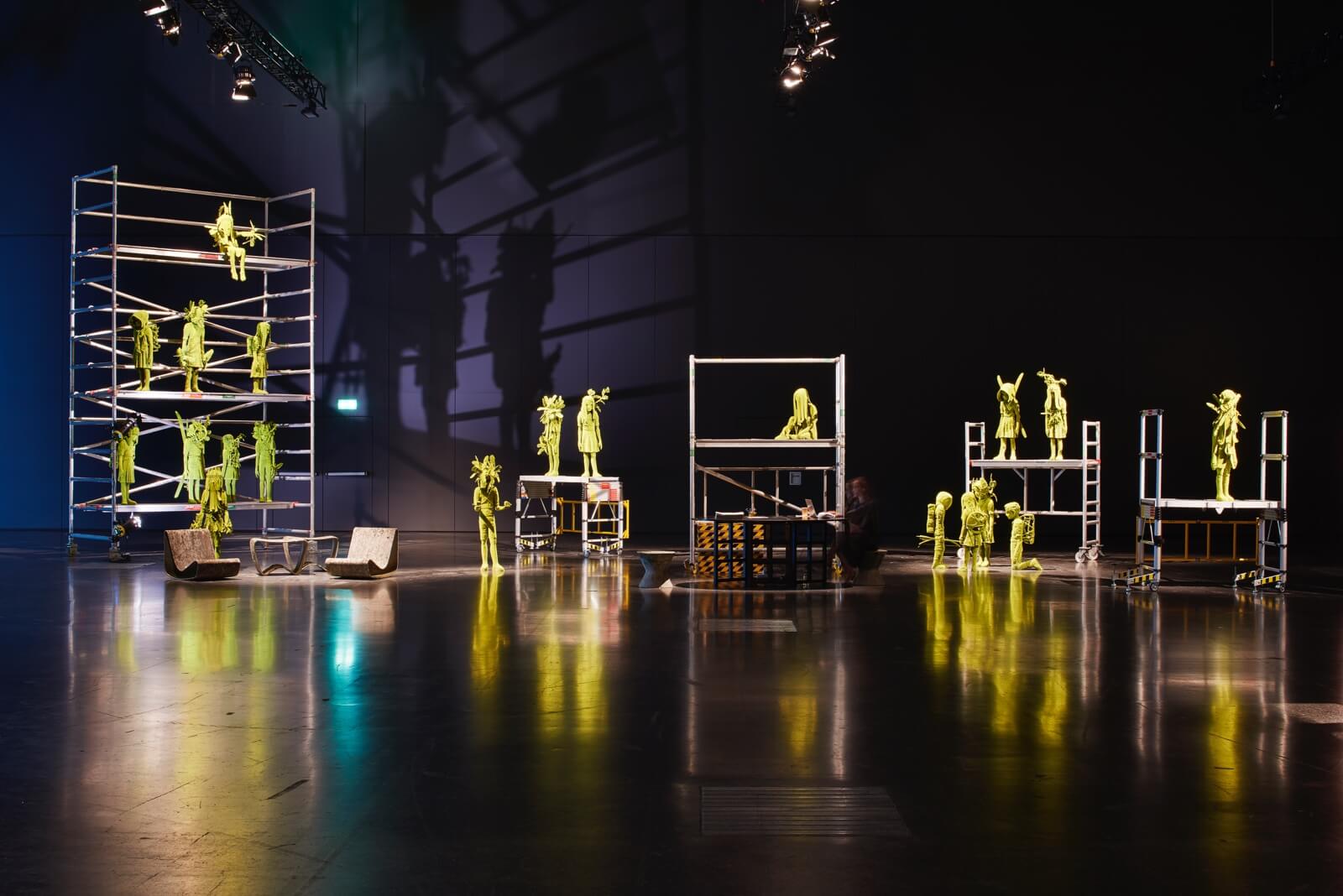
Kim Simonsson, ‘Moss Tower’, at Jason Jacques Gallery
COURTESY: James Harris
What are your thoughts on how designers are tackling climate change?
I think there’s a real shift. In general, I don’t think we talk about design as a problem-solving endeavour anymore, especially in regard to big issues such as climate change or the environmental crisis. We’re more aware that these issues are too important to be ‘soft’. It’s more about mitigating the problems we have, changing what we can change and thinking of ways to navigate what we can’t change. The question becomes: How can we confront this new reality in as constructive a way as possible? Shahar Livne’s project with plastic composites acknowledges that we need to reduce our consumption and disposal of plastic, but that it’s already in the stratosphere and is not going away anytime soon.
What other trends and shifts in approaches to design have you observed?
I think designers are looking at processes and technology, and exploring materials in a more pragmatic way. At one point, a lot of projects were exploring things such as 3D-printing, water-jet printing and CNC-building, but hadn’t reached the next step of making them useful. We’re gradually seeing a more grounded, thoughtful use of techniques. Joseph Walsh’s piece uses parametric design but is made from strips of ash wood and human muscle. It’s using the computer as a tool to generate the design, but ultimately it’s a piece of craft that’s exploiting the material’s natural properties – it is not trying to force things into a technological mould just to say it can be done. There’s a greater sense of appropriateness of technology because we’re no longer as starry-eyed about it as we used to be, and are increasingly aware of its drawbacks. Good design is about being thoughtful and conscious of what you’re doing and is rooted in a system of ethical values. If anything, I think there’s more of a shared sensibility now.
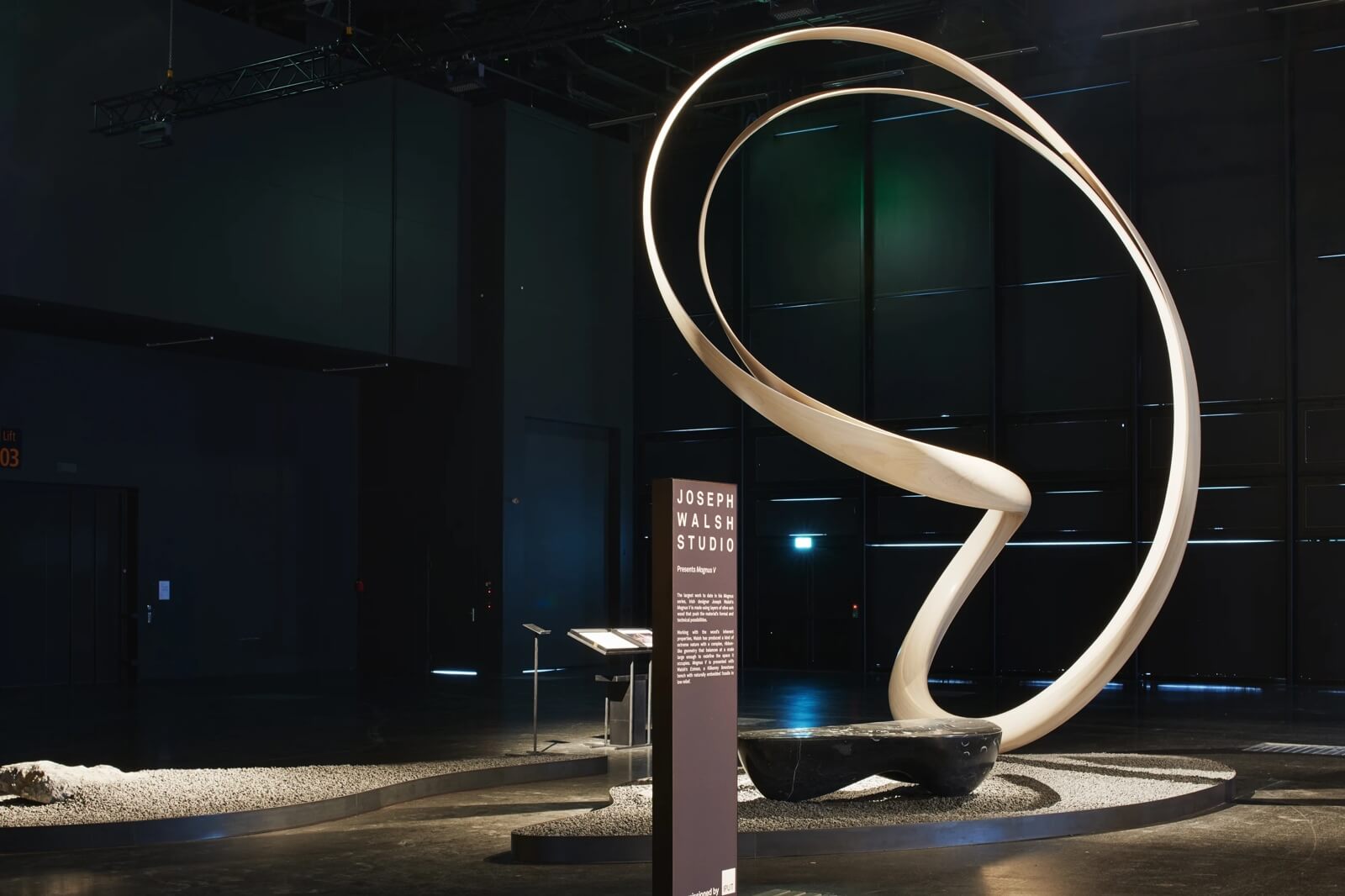
Joseph Walsh Studio, ‘Magnus V’, 2018
COURTESY: James Harris
Designers have always had the sharpest antennae, articulating, responding to and helping to shape the world that we inhabit
How do you see the relationship between these concerns and what defines collectible design?
Collectible design has meaning and historical value because it represents innovation – not only in terms of technology and material, but socially and culturally. It’s beyond the purely utilitarian and functional and looks at design as a cultural, experimental endeavour that requires broader thinking. These works say something about their time, and the concerns of the designers and the societies they belong to. Designers have always had the sharpest antennae, articulating, responding to and helping to shape the world that we inhabit.
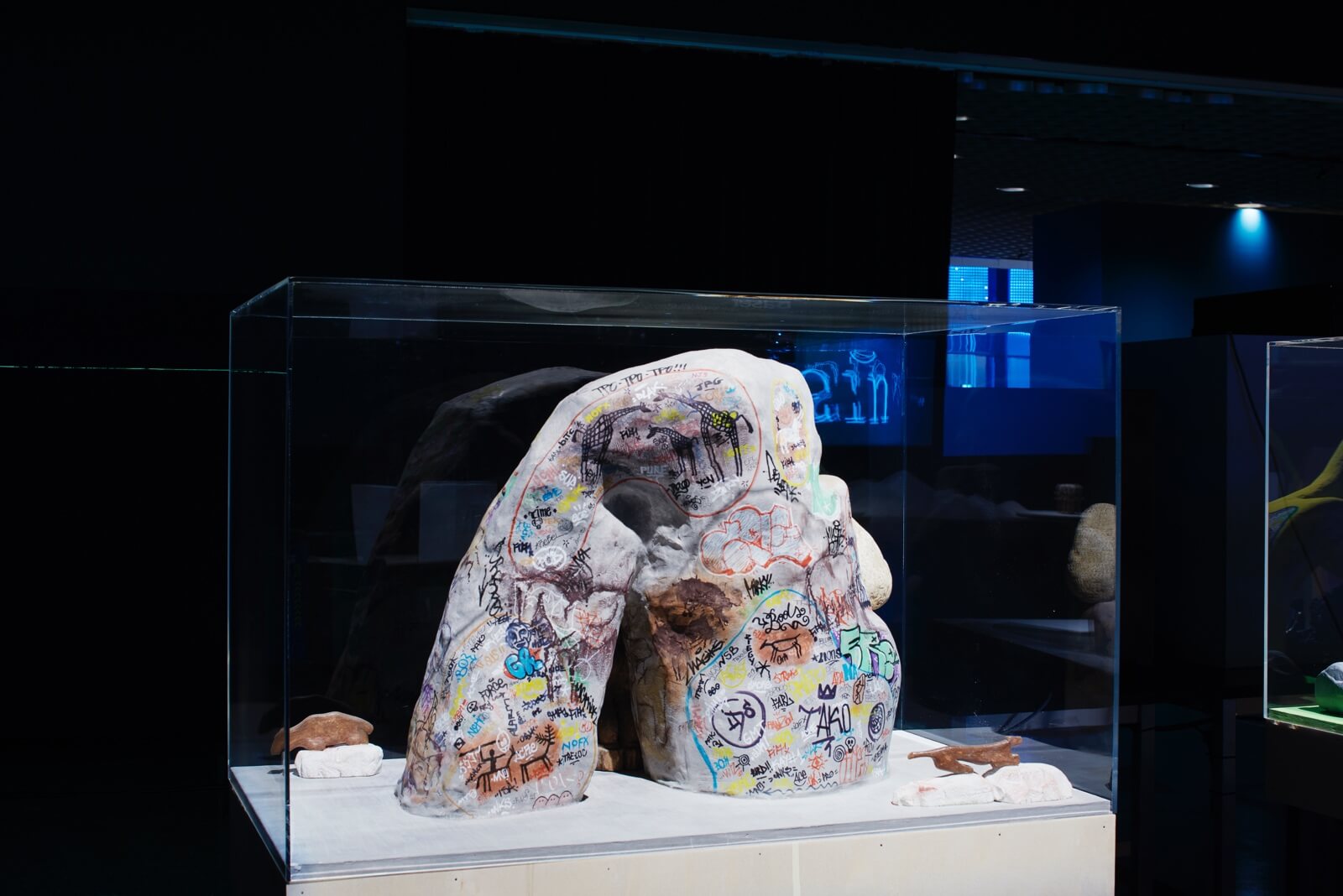
Andrea Branzi, ‘Territories’, at Friedman Benda
COURTESY: James Harris
What can you tell us about your upcoming thematic proposal, ‘Elements: Water’, for Design Miami/ in December?
In Miami, we won’t have the enormous space that we had downstairs in Basel, so the format will be different. The proposal will be more integrated throughout the venue so we’ll probably focus on discussions, and on integrating our partnerships and initiatives into the programme.
Design Miami/ – is the global forum for design. Each fair brings together the most influential collectors, gallerists, designers, curators and critics from around the world.
Design Miami/ runs from 4th – 8th December, 2019.
Please see The Design Edit’s recent review of Design Miami/Basel.




